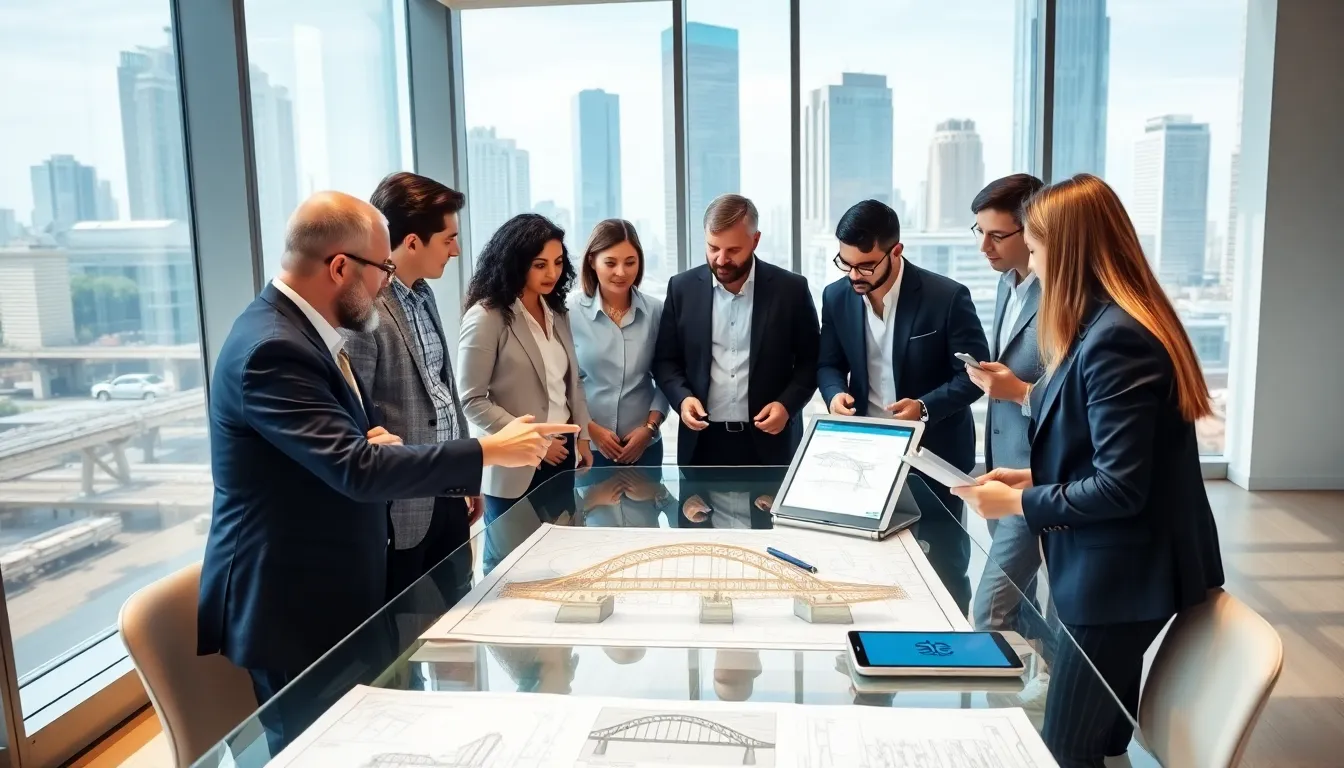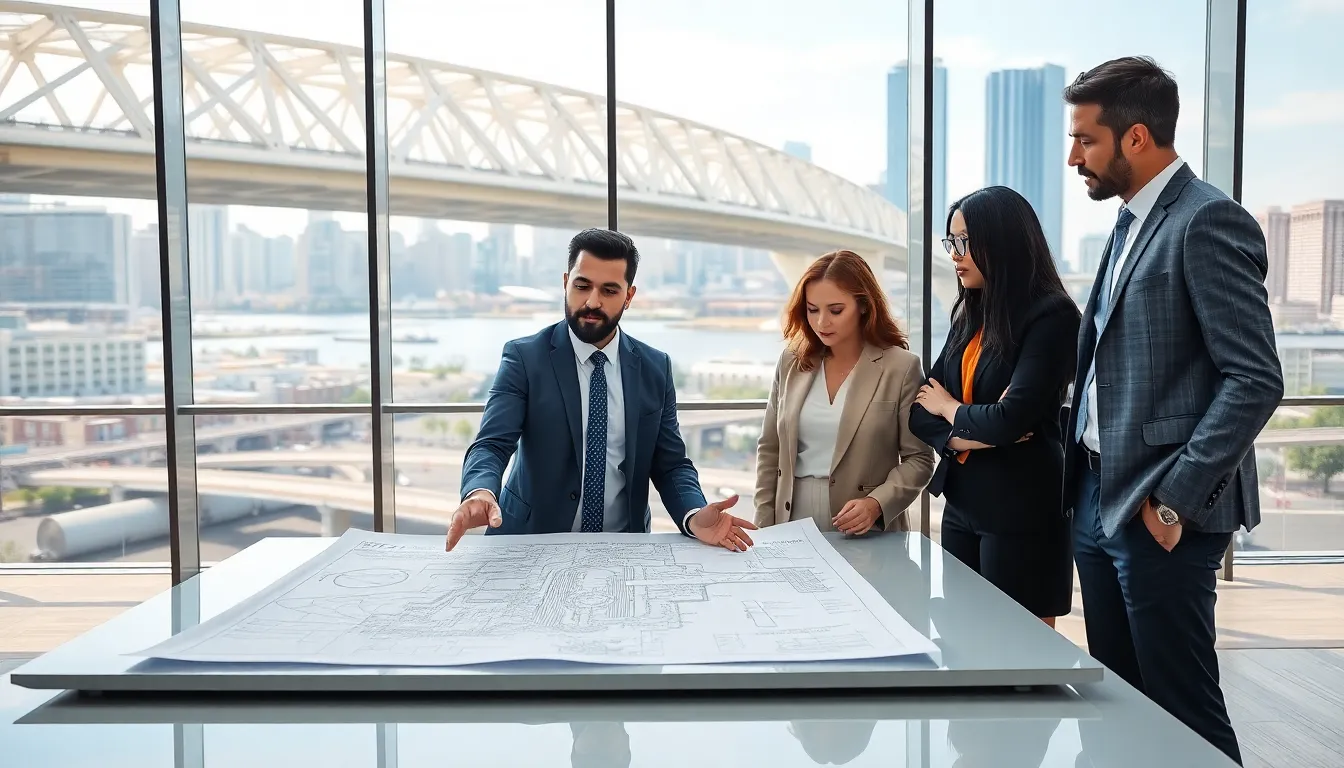Imagine a world where every bridge sings and every road winks at you. A bit far-fetched? Maybe. But civil design concepts are no joke. These principles essentially shape our environment, impacting everything from skyscrapers piercing the skyline to those quiet park benches you might (or might not) sit on during lunch. Understanding these concepts doesn’t just make you a design enthusiast: it elevates your appreciation for the unsung heroes of infrastructure. So, let’s dig in and see what makes civil design tick. Spoiler: it’s not just about pretty buildings.
Table of Contents
ToggleOverview of Civil Design

Civil design is like the master plan behind our daily lives. It encompasses the art and science of designing and constructing infrastructure, from highways to water systems. Every structure you see, whether it’s a concrete jungle or a serene bridge over a river, has been meticulously planned by civil engineers. They blend creativity with technical expertise, ensuring that every design is not only aesthetically pleasing but also functional, safe, and resilient.
This field plays a pivotal role in urban development. With over half of the world’s population living in cities, robust civil design is critical for managing everything from traffic flow to waste disposal. In essence, it helps create environments that enhance quality of life, sustain communities, and support economic growth. But what does it take to bring these designs to life? Let’s break down the key principles that guide civil design.
Key Principles of Civil Design
Every civil design project is rooted in a set of fundamental principles. First up is structural integrity. If it can’t stand, it’s not worth building. Engineers conduct rigorous assessments to ensure that the materials chosen can withstand not just the weight they’ll bear but also environmental stresses like wind and seismic activities.
Next on the list is functionality. A design might look fabulous, but if it doesn’t serve its purpose, it’s just eye candy. Civil engineers focus on how people will interact with spaces, think traffic patterns, accessibility, and user safety.
Then, there’s sustainability. The modern civil designer must consider environmental impact. This involves making choices that minimize waste and promote energy efficiency. Finally, aesthetics shouldn’t be overlooked. A visually appealing design can foster community pride, enhancing the look and feel of neighborhoods. Balancing these principles is crucial for successful civil design, but that’s just the beginning.
Types of Civil Design
Civil design is incredibly diverse, with various specializations tailored to specific needs. Here are some of the key branches:
- Structural Design: Focused on buildings and other structures, ensuring they can handle loads and stressors without collapsing.
- Transportation Design: Encompasses the planning and design of roadways, highways, and mass transit systems. It considers things like traffic flow and safety.
- Environmental Design: Prioritizes the relationship between construction and nature. It often deals with water resources, waste management, and pollution control measures.
- Geotechnical Design: Involves the study of soil and rock mechanics to determine their suitability for construction projects, ensuring a stable foundation.
- Urban Design: A multidisciplinary approach that combines elements of architecture, landscape architecture, and city planning to develop functional and attractive urban spaces.
These types are interrelated, often requiring collaboration among specialists to create integrated solutions.
Sustainable Civil Design Practices
Sustainability is not just a trend: it’s become an essential aspect of civil design. Here are some sustainable practices gaining traction:
- Green Materials: Utilizing recycled, renewable, or sustainably sourced materials can significantly reduce the carbon footprint of any project.
- Energy-efficient Designs: Net-zero buildings that produce as much energy as they consume are on the rise. Features like solar panels and energy-efficient HVAC systems are becoming standard.
- Water Management Systems: Implementing rainwater harvesting and greywater recycling reduces demand on municipal systems while promoting resource conservation.
- Ecosystem Integration: Designs that incorporate natural landscapes lead to better biodiversity and ecological health. This might mean preserving existing greenery or creating new green spaces.
Making sustainable choices in civil design not only benefits the environment but also promotes social well-being by creating healthier living spaces.
Modern Technologies in Civil Design
Technology is transforming civil design in profound ways. Here are a few noteworthy advancements:
- Building Information Modeling (BIM): This innovative technology allows engineers to create digital representations of physical structures. It streamlines planning, improves accuracy, and enhances collaboration among stakeholders.
- Drones: UAS (unmanned aerial systems) are being utilized for site surveys and inspections, providing real-time data and reducing overhead costs.
- 3D Printing: Emerging as a feasible construction method, it allows for rapid prototyping and even full-scale building constructions with reduced waste.
- Augmented Reality (AR): AR helps visualize designs within real-world contexts, enhancing client presentations and making adjustments easier.
These technologies not only speed up the design process but also improve quality and safety outcomes, reshaping how projects are planned and executed.
Challenges in Civil Design
Even though the advancements in civil design, challenges abound. Some of the most pressing issues include:
- Regulatory Constraints: Navigating local, state, and federal regulations can be a challenging job. Compliance is critical, yet it can stifle innovation.
- Budget Limitations: Funding can limit the scope of projects. Engineers often have to find creative solutions to deliver quality work within budget.
- Emerging Technologies: While modern technologies offer vast potential, they also require significant training and adaptation. The pace of technological change can leave some professionals struggling to keep up.
- Environmental Concerns: Balancing development with environmental preservation is increasingly difficult. Designers must work to mitigate impacts even as they push for new projects.
These challenges necessitate ongoing education and adaptation among professionals in the field, making civil design a continually evolving discipline.








